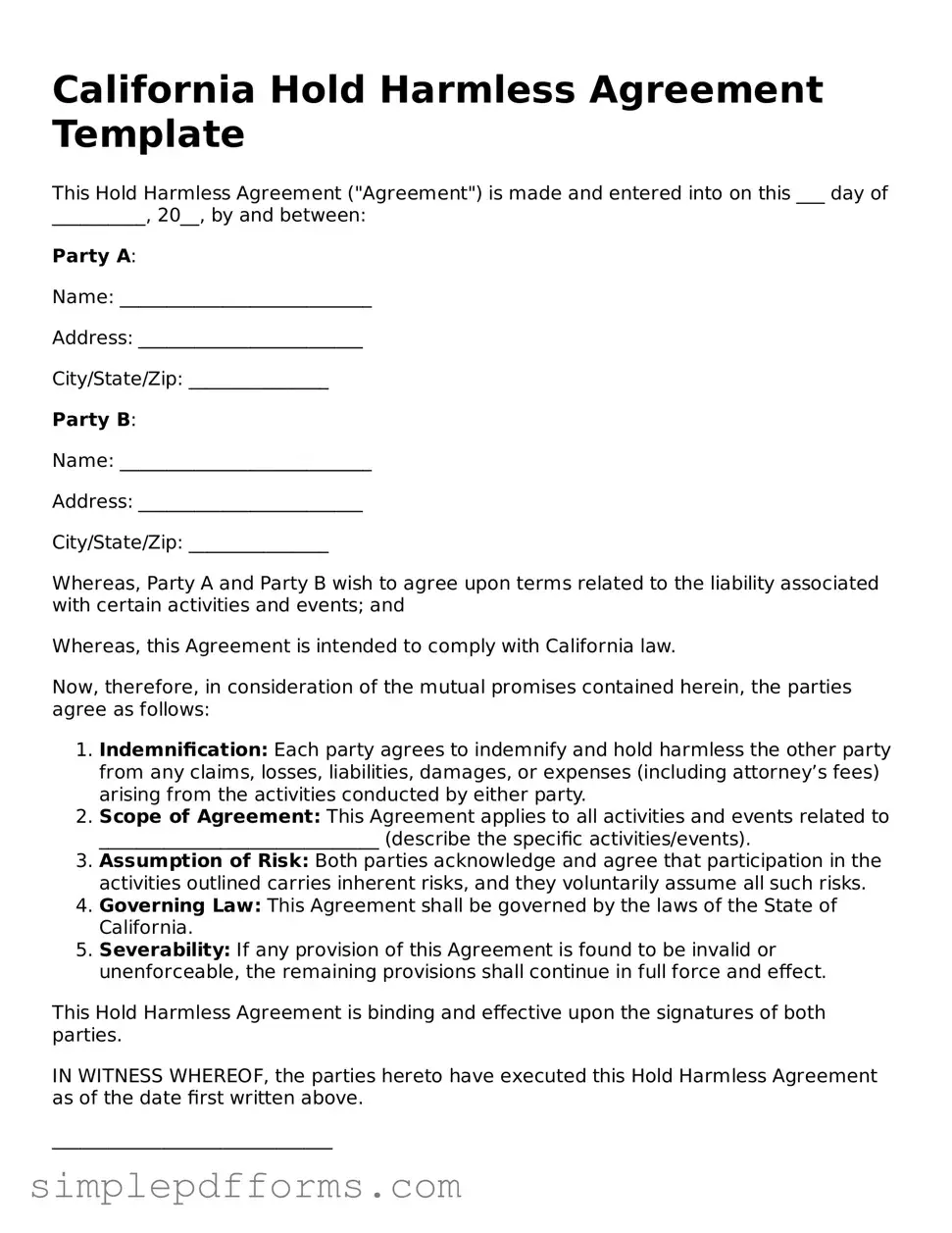California Hold Harmless Agreement Template
This Hold Harmless Agreement ("Agreement") is made and entered into on this ___ day of __________, 20__, by and between:
Party A:
Name: ___________________________
Address: ________________________
City/State/Zip: _______________
Party B:
Name: ___________________________
Address: ________________________
City/State/Zip: _______________
Whereas, Party A and Party B wish to agree upon terms related to the liability associated with certain activities and events; and
Whereas, this Agreement is intended to comply with California law.
Now, therefore, in consideration of the mutual promises contained herein, the parties agree as follows:
- Indemnification: Each party agrees to indemnify and hold harmless the other party from any claims, losses, liabilities, damages, or expenses (including attorney’s fees) arising from the activities conducted by either party.
- Scope of Agreement: This Agreement applies to all activities and events related to ______________________________ (describe the specific activities/events).
- Assumption of Risk: Both parties acknowledge and agree that participation in the activities outlined carries inherent risks, and they voluntarily assume all such risks.
- Governing Law: This Agreement shall be governed by the laws of the State of California.
- Severability: If any provision of this Agreement is found to be invalid or unenforceable, the remaining provisions shall continue in full force and effect.
This Hold Harmless Agreement is binding and effective upon the signatures of both parties.
IN WITNESS WHEREOF, the parties hereto have executed this Hold Harmless Agreement as of the date first written above.
______________________________
Signature of Party A
______________________________
Signature of Party B
